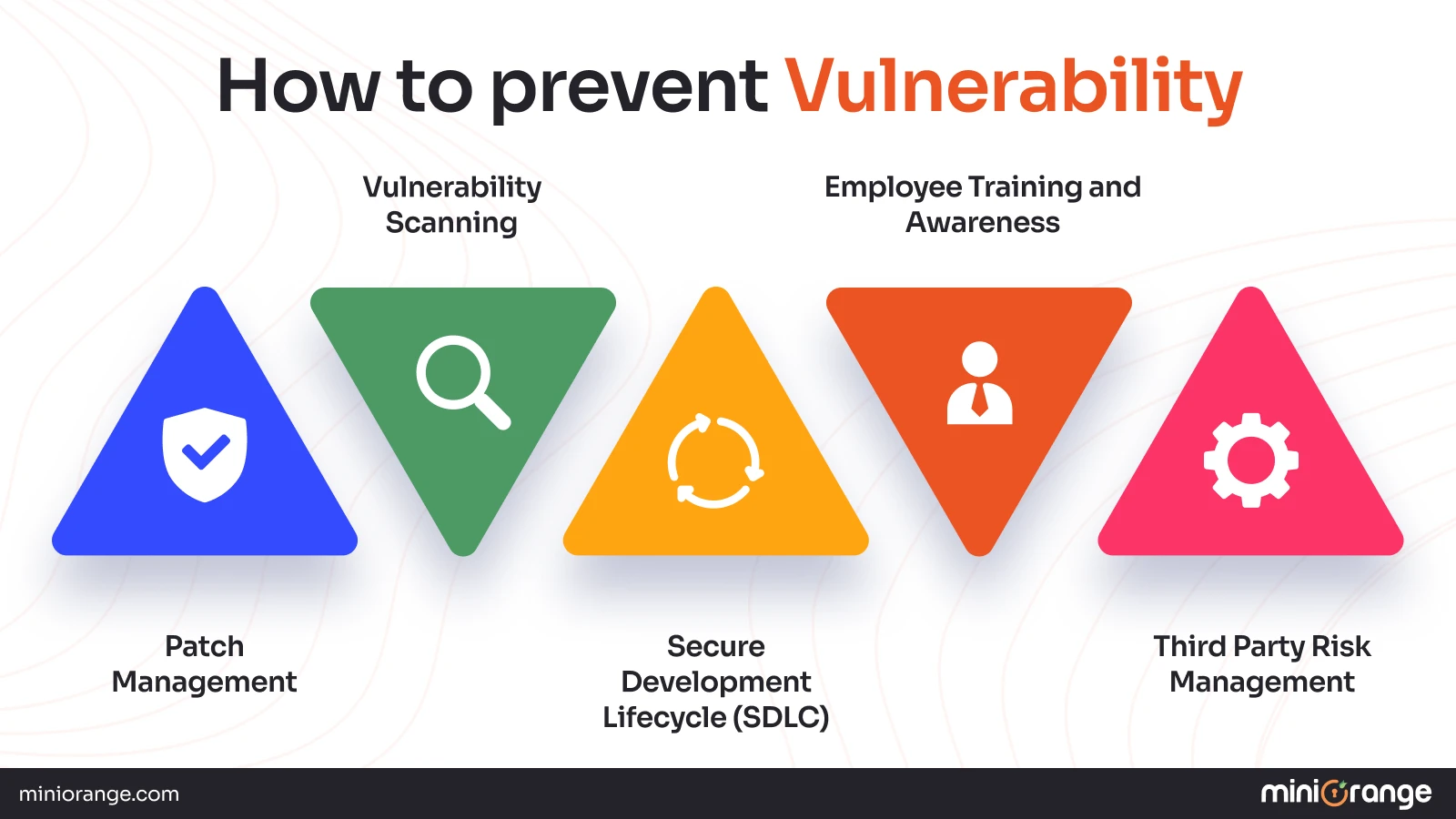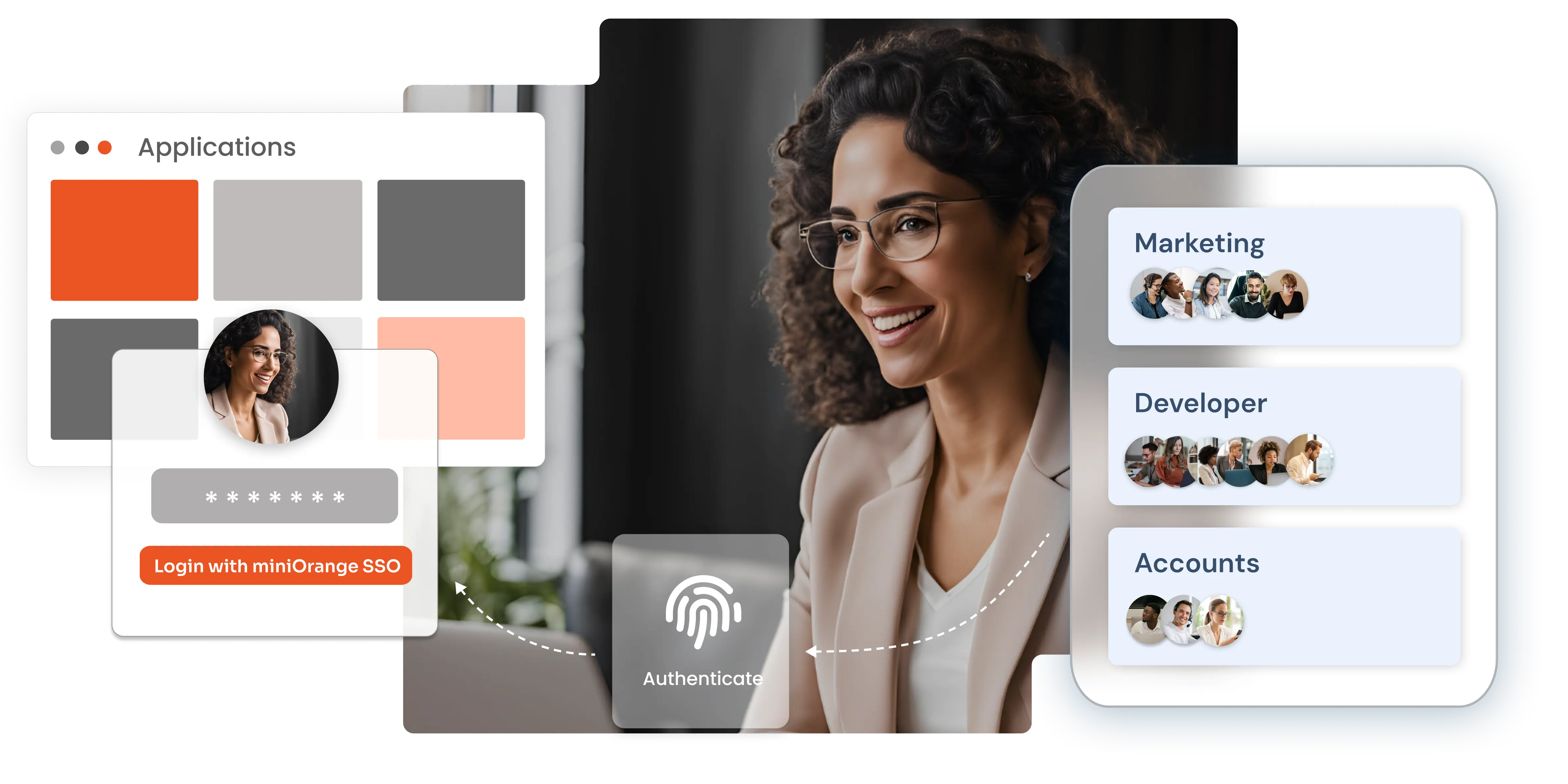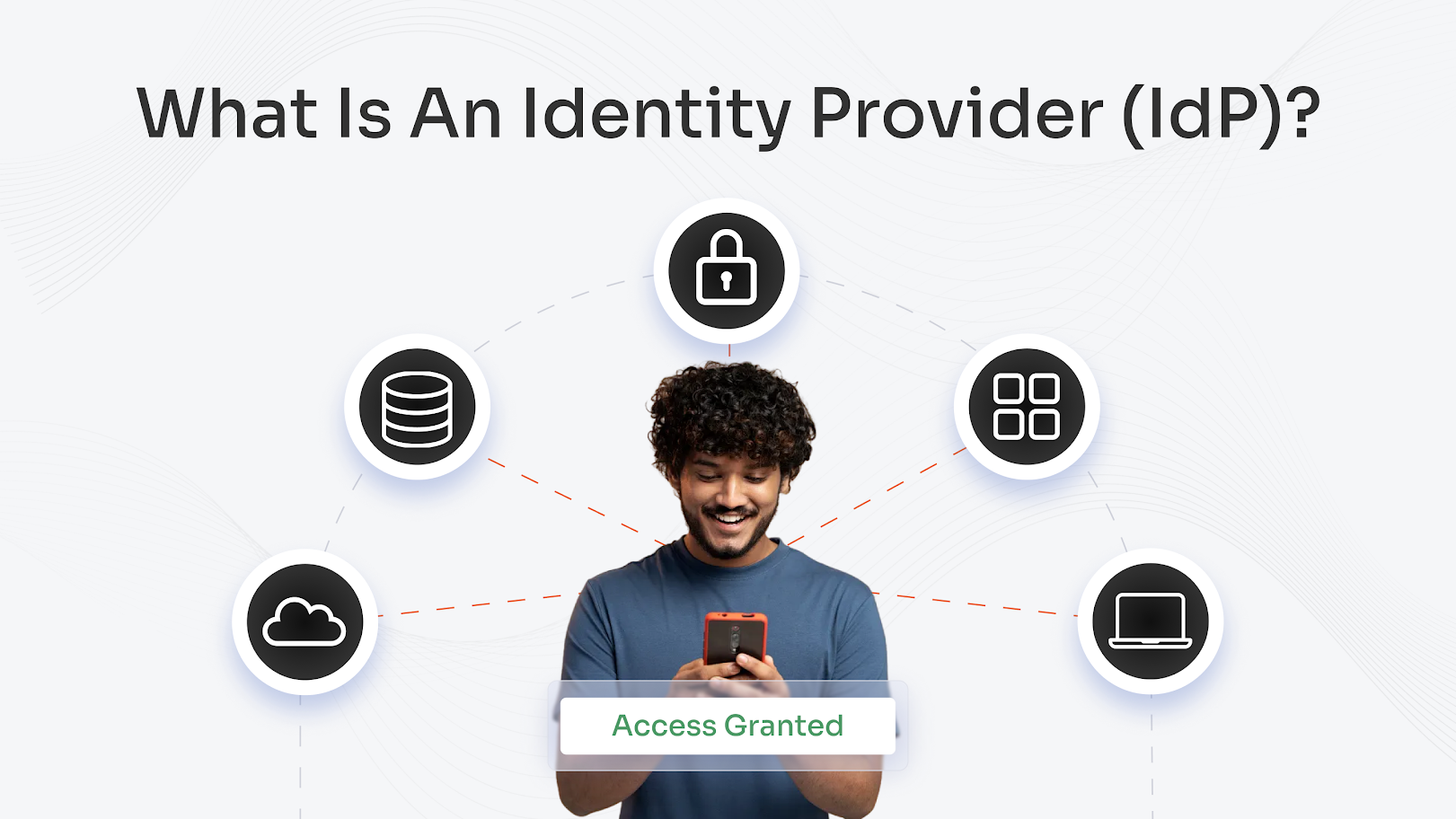Digital footprints are multiplying across devices, users, and access points, which means an expanding attack surface that’s as complex as it is vulnerable. From remote work to IoT, every new touchpoint introduces fresh risk. As cybersecurity attacks evolve in speed and sophistication, generic defenses fall short. Modern cybersecurity requires targeted solutions that anticipate vulnerabilities before they’re exploited.
That’s where miniOrange, as your security software solution partner, steps in. We don’t believe in offering one-size-fits-all tools; we offer authentication solutions ideal for your digital ecosystems based on threat vectors and real-world risk.
If you're dealing with legacy app exposure, compliance gaps, or identity misuse, miniOrange helps identify critical weaknesses and deploy precise, frictionless access controls to eliminate them. The result: stronger defense, smarter strategy, and zero compromise on user experience.
Explore the Top Cybersecurity Threats You Should Know
Defining a Cybersecurity Vulnerability
With the growth in apps and systems, vulnerabilities have increased at a greater rate than expected. Therefore, it is crucial to understand the meaning of vulnerability in-depth.
What is a vulnerability?
A vulnerability is a weakness or flaw in a system, network, or process that could be exploited by an attacker to gain unauthorized access, disrupt services, or steal data. Vulnerabilities can stem from misconfigurations, outdated software, insecure code, weak authentication mechanisms, or human error. They don't cause harm by themselves, but they open the door for threats to take advantage.
Threat vs. Vulnerability vs. Risk: Key Differences
| Term | Definition | Example |
|---|---|---|
| Threat | A potential cause of harm, anything that can exploit a vulnerability | A hacker trying to breach a system |
| Vulnerability | A weakness that could be exploited | Unpatched software or weak passwords |
| Risk | The potential impact when a threat exploits a vulnerability | Data breach resulting in financial or legal loss |
Why Vulnerabilities Matter in Cybersecurity Frameworks
Cybersecurity frameworks (like NIST, ISO 27001, and CIS) emphasize vulnerability management as a cornerstone of proactive defense. Here's why:
- Early Detection: Identifying vulnerabilities helps prevent breaches before they occur.
- Compliance & Auditability: Addressing known weaknesses is often a regulatory requirement (e.g., GDPR, HIPAA).
- Risk Reduction: Fixing vulnerabilities lowers the chance and impact of an exploit.
- Strategic Planning: Vulnerability data informs threat models, access policies, and investment in controls.
- Incident Response Preparedness: Knowing where your weak points are helps teams respond faster if breached.
Examples of Security Vulnerabilities
Have you thought about how vulnerabilities are truly posed and how they look? The following has some of the examples of security vulnerabilities:
Broken Authentication
It occurs when an application fails to properly secure login credentials or session tokens. Attackers can exploit this by brute-forcing passwords, hijacking sessions, or bypassing login mechanisms altogether. Common causes include weak password policies, missing multi-factor authentication (MFA), predictable session IDs, and flaws in logout procedures.
SQL Injection
SQL Injection targets poorly secured input fields by injecting malicious SQL code that manipulates database queries. If input isn’t properly validated or parameterized, attackers can view, modify, or delete sensitive data. This vulnerability is prevalent in legacy systems, custom-built applications, and improperly tested web forms.
Cross-Site Scripting (XSS)
XSS enables attackers to inject malicious JavaScript into trusted websites. These scripts can be used to steal session cookies, redirect users to fraudulent sites, or deface web pages. It typically stems from unsanitized user inputs, especially in comment sections, search fields, or form submissions.
Cross-Site Request Forgery (CSRF)
CSRF forces a user to execute unwanted actions on a web application where they’re authenticated. For example, an attacker could trigger a funds transfer or password reset without the user’s intent. It leverages trust in the authenticated user and often succeeds when applications don’t validate request origins or use anti-CSRF tokens.
Security Misconfiguration
This broad category includes any insecure deployment setting, such as open ports, default credentials, unnecessary services, verbose error messages, or disabled security features. Misconfiguration is common in cloud environments and rapid DevOps deployments where visibility and control may be limited.
Discover Man-in-the-Middle (MITM) Attack in Cybersecurity
Types of Vulnerabilities in Cybersecurity
Threats can come in different forms and structures and that is the same with vulnerability. Here are the main types of vulnerabilities:

Human Vulnerabilities
Stem from user behavior, clicking phishing links, using weak or shared passwords, mishandling sensitive data, or failing to follow security protocols. Human error remains one of the most exploited and difficult-to-patch vulnerabilities.
Software Vulnerabilities
Include flaws in application logic, outdated libraries, missing patches, and insecure APIs. These vulnerabilities are exploited through techniques like code injection, buffer overflows, or exploitation of zero-day bugs. Regular updates and secure coding practices help mitigate these risks.
Hardware Vulnerabilities
Involve flaws in physical devices, like unpatched firmware, open USB ports, or insecure chipset designs. IoT devices, outdated network gear, and unsecured endpoints are frequent targets for exploitation.
Configuration Vulnerabilities
Result from incorrect or inconsistent system settings, such as over-permissioned accounts, exposed administrative interfaces, or disabled encryption. Even advanced systems are ineffective when misconfigured.
How Vulnerabilities Are Exploited by Attackers
Vulnerabilities are planned attempts of exploitation and are done in a step-by-step process.
Steps of an Exploit
Attackers follow a methodical approach to take advantage of security flaws:
Reconnaissance: They gather information on the target’s network, technologies, employees, and exposed services.
Scanning & Enumeration: Tools are used to identify open ports, outdated software, or misconfigured systems.
Weaponization: Malicious payloads are crafted based on identified vulnerabilities (e.g., exploit code for SQL injection).
Delivery: The payload is delivered via phishing emails, infected attachments, compromised websites, or direct intrusion.
Exploitation: The vulnerability is triggered, granting unauthorized access, privilege escalation, or code execution. Many of these attacks succeed due to outdated systems, which is why pairing IAM controls with reputable patch management software greatly reduces exposure.
Installation: Malware or persistence mechanisms are deployed to maintain access.
Command & Control: Attackers communicate with compromised systems remotely, often evading detection.
Action on Objectives: Data is exfiltrated, operations are disrupted, or ransomware is launched based on the attacker’s goal.
Real-World Exploit Scenarios
Retail Sector: Unsecured S3 cloud buckets with improper access controls led to mass leaks of customer records.
Healthcare: Legacy hospital systems without MFA were compromised through phishing and brute-force attacks.
Financial Services: SQL injection in a web-based reporting dashboard allowed attackers to retrieve internal transactions.
Government Agencies: Misconfigured VPN access enabled credential stuffing and unauthorized network access.
Manufacturing: Unpatched firmware in operational systems allowed remote code execution via exposed ports.
Learn How MFA Prevents Cyber Attacks
Understanding Cyber Risk and Causes
Vulnerabilities originate from a mix of technical flaws, process gaps, and human behavior.
What causes vulnerabilities?
Outdated Software
Unpatched applications and operating systems retain known weaknesses that attackers target.
Poor Coding Practices
Missing input validation, insecure APIs, and hardcoded credentials invite exploitation.
Misconfiguration
Over-permissive access, open ports, and default settings compromise system integrity.
Lack of Awareness
Human errors like weak passwords or mishandling sensitive data increase exposure.
Complex Ecosystems Integration across diverse environments introduces inconsistencies and blind spots.
Vulnerability vs Risk
| Aspect | Vulnerability | Risk |
|---|---|---|
| Definition | A flaw or weakness in a system or process | The potential impact of a threat exploits the vulnerability |
| Nature | Technical gap or exposure | Business consequence or probability |
| Example | Unpatched software, weak passwords, open ports | Data breach, regulatory fines, reputational damage |
| Measurement | Identified using scans, audits, or security assessments | Quantified based on likelihood, severity, and asset value |
| Management | Addressed via patching, configuration changes, or coding improvements | Managed through risk analysis, mitigation planning, and policy enforcement |
| Focus | Prevention of exploitability | Minimization of impact |
| Relation to Threat | The gateway a threat uses | The result if the threat succeeds |
How to Prevent Vulnerabilities?
Now that you have a deep understanding of the definition, types, and process, you should know ways to prevent vulnerability in your organization’s digital ecosystem.

Patch Management
Ensure all systems, applications, and devices receive timely updates. Automate patch deployment where possible to reduce exposure windows and align with vulnerability remediation SLAs.
Vulnerability Scanning
Conduct regular internal and external scans to identify flaws in networks, applications, and configurations. Use CVSS scores to prioritize remediation and feed findings into threat models.
Secure Development Lifecycle (SDLC)
Embed security at every stage of application development from design to deployment. Techniques include threat modeling, secure coding, peer reviews, and automated testing for known vulnerabilities.
Employee Training
Regular, role-specific training helps staff recognize phishing, handle credentials safely, and follow security protocols. Awareness turns users from risk vectors into frontline defenders.
Third-Party Risk Management
Evaluate and monitor vendors, partners, and SaaS platforms for compliance and secure practices. Enforce policies like least-privilege access and ensure integration points don't introduce vulnerabilities.
Learn How to Prevent DDoS Attacks with Proactive Security
Say Goodbye to Vulnerabilities with miniOrange Security
Now you have a fair understanding of how vulnerabilities penetrate and how they can ruin your systems. Vulnerabilities aren’t just weaknesses; they’re entry points for exploitation. miniOrange MFA software bridges those gaps with purpose-built Identity and Access Management solutions that elevate security precision.
Contact us for a free consultation
Zero Trust Access Controls limit exposure. Empower only authorized users with adaptive authentication, context-aware access across on-premise and cloud environments.
Single Sign-on (SSO) that Strengthens, Not Just Simplifies, but eliminates password fatigue without compromising integrity. miniOrange’s seamless SSO aligns security with user experience, balancing compliance, ease, and control.
Privileged Access, Fully Governed PAM from miniOrange goes beyond monitoring. It enforces granular controls, audits privileged sessions, and neutralizes lateral movement risks in real time.
Unified Compliance. No Silos. Whether you're facing GDPR, HIPAA, or ISO 27001, miniOrange integrates security frameworks into your access strategy, proactively preventing violations before they occur.
Scalable for Every Identity, from remote workers to third-party contractors, miniOrange ensures that every identity is secured, authenticated, and accountable.
Conclusion
As cyber threats grow more sophisticated, the cost of overlooking identity gaps and access loopholes becomes unsustainably high. Organizations must transition from reactive patching to proactive hardening, where methods of authentication aren’t just checkpoints, but strategic barriers against exploitation.
In addition to our SSO and PAM solutions, we have an MFA solution with 15+ MFA methods that provides layered defense. From OTPs and push notifications to biometric authentication and device fingerprinting, every login becomes a fortified gateway. Leveraging contextual authentication, access decisions are made based on real-time risk factors like user behavior, device health, and location. And when securing network access, integrating miniOrange MFA with Palo Alto VPN ensures that privileged access remains uncompromised.
The vulnerabilities will persist. The question is whether your access infrastructure is built to resist them. With miniOrange, resistance isn’t optional; it’s engineered.
FAQs
What’s the most exploited vulnerability type?
The most commonly exploited vulnerabilities typically fall under software flaws, especially those involving unpatched operating systems, outdated applications, or misconfigured access controls. The OWASP Top 10 also highlights injection flaws, broken authentication, and sensitive data exposure as frequent entry points that attackers target.
What are examples of security vulnerabilities?
Security vulnerabilities can span multiple layers of an organization’s infrastructure. Examples include:
- Unpatched software bugs (e.g., Log4Shell)
- Default credentials or weak passwords
- Lack of multi-factor authentication
- Improper network segmentation
- Misconfigured cloud storage buckets
- Unencrypted communications or exposed APIs
Each presents a potential gateway for lateral movement, data exfiltration, or system compromise.
Are vulnerabilities always technical?
No. While technical flaws dominate headlines, human-centric vulnerabilities are equally critical. These include:
- Social engineering and phishing attacks
- Poor security awareness or hygiene
- Insider threats or negligence.
Security resilience demands a layered approach
How long do hackers typically exploit vulnerabilities?
It depends on detection and remediation speed. Studies show that known vulnerabilities remain exploitable for months or even years if unpatched. Threat actors often scan for exposed systems immediately after disclosures. For example, attackers weaponized zero-day flaws in VPNs and browser plugins within hours of public release. Timely updates and MFA integration (like miniOrange MFA with Palo Alto VPN) are essential to close that window of risk.





Leave a Comment